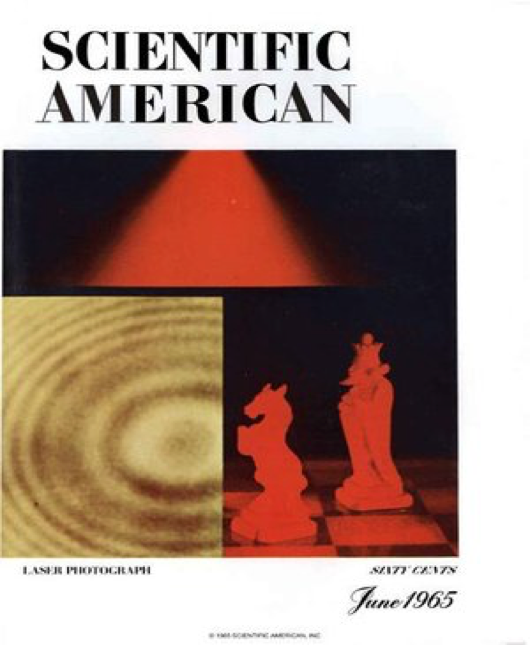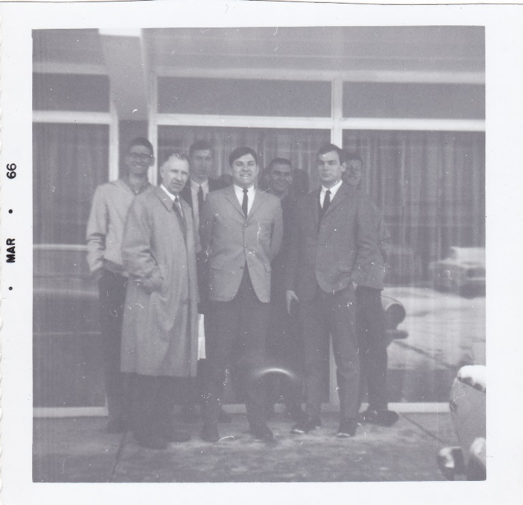The June 1965 issue of Scientific American featured a hologram produced by a research group at Michigan University using a laser. Marshall Physics Department had that summer obtained a helium-neon laser. In the fall of 1965 the Physics Club received a grant from the Bendix Foundation to produce holograms with our new laser.
 We obtained a grant for $1500 (more money then than now) with which we took a group of students to Ann Arbor to discuss the project with the Michigan researchers, Emmett Leith and Juris Upatnieks. With the money we also purchased the equipment needed to produce holograms.
We obtained a grant for $1500 (more money then than now) with which we took a group of students to Ann Arbor to discuss the project with the Michigan researchers, Emmett Leith and Juris Upatnieks. With the money we also purchased the equipment needed to produce holograms.
The process for producing the holograms utilizing the interference of light waves had been theorized in 1947 by Dennis Gabor. The missing ingredient at that time was a “coherent monochromatic light source”. The invention of the laser provided that missing ingredient. The process utilized by Leith and Upatnieks involved splitting a beam from a continuous laser, using one of the split beams as the reference beam and the other as the image beam. The two beams were combined at the photographic plate forming an interference pattern. The 3D image of the hologram was produced when the reference beam was later directed at the interference pattern recorded on the photographic plate.
The process we saw in Ann Arbor required an extremely stable work surface. For this we purchased a large granite block like the one we saw in Michigan. We also purchased beam splitters and used available mirrors to direct the laser beams to the object and to the photographic surface. The geometry required that we purchase glass photographic plates rather than film.
Back from our trip and with the granite block and equipment set up in a back room in the lab we began work. Under the direction of Mr. Hannah, the club sponsor and with instructions from Leith and Upatnieks we directed the laser beam through the beam splitters, to the chess pawn, then to the photographic plate. After each trial the plate was developed and place back in the path of the reference beam. After each trial the result was the same- nothing!
One exasperating day with our grant money spent we became concerned that we were about out of photographic plates. One of the guys went to count the plates and examined the box in which they had been received. He asked, “What does “orthochromatic” mean?” With the plates carefully wrapped, the lights back on and a dictionary in hand we discovered that orthochromatic film is not sensitive to red light. Of course, our helium-neon laser produced the most beautiful red/orange beam you could imagine.
Our final project report contained a lot of “humble pie”. I don’t know if the granite block is still in the storeroom or if the beautiful red/orange laser beam still shines, but I did have a great experience and great memories from Marshall Physics Department.
 I don’t remember all the guys. Mr. Hannah is on the front row, Al Dubba and Rodney Honaker are on the right in the back. I was the photographer. Yes, there was snow in Michigan.
I don’t remember all the guys. Mr. Hannah is on the front row, Al Dubba and Rodney Honaker are on the right in the back. I was the photographer. Yes, there was snow in Michigan.
Bob Campbell, Class of 67